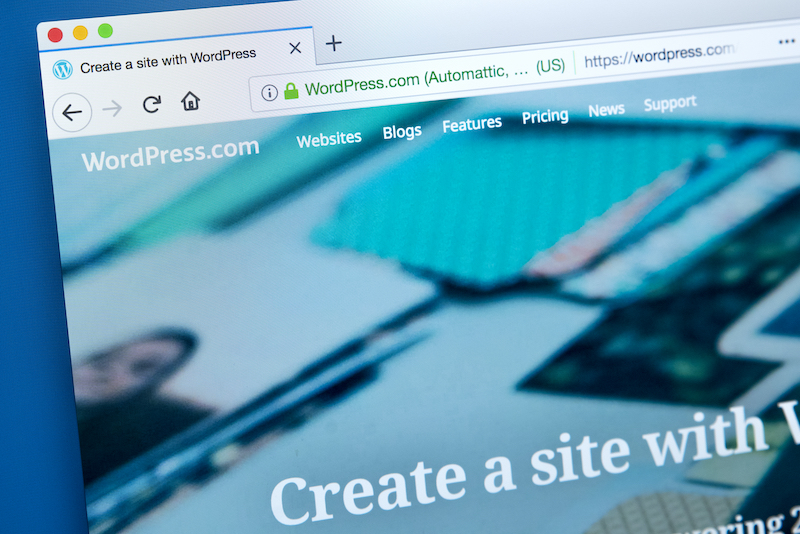If it is free, what is there not to like, right? Well, a free WordPress theme is great for bloggers who are just starting out. But if you want to be a professional blogger, you will realize that that there are several things a free theme cannot do.
For one, you do not have full liberty to change your theme’s colors. Today, we will show you 10 reasons to avoid using a free WordPress theme for your website. We are not saying that you should avoid them like the plague—all we are saying is that these themes have a lot of limitations.
They have Malicious Codes
A lot of free themes are embedded with malicious codes. Criminals prey on people who love free items. If they can provide you with something free, chances are you would prefer this free item over the paid one, but you did not know that the theme has a program inside it that can capture sensitive data from you.
Since your theme is like your website’s “housing unit”, it can access data from your plug-ins. If you have a payment processor plug-in, the theme can get your username and password if it was programmed to do that.
They Rarely Get Updated
Anything related to technology must be able to keep up with the times. Our mobile phones have operating systems that have to be upgraded now and again. If you do this, you can download modern apps and use them.
Themes work in the same way. They have to be upgraded so they can work seamlessly with new plug-ins, or old plug-ins that went through an upgrade. This is something that a free wordpress theme may not be able to deliver. Free themes do not get upgraded often because the creators do not have the resources to do it.
They are Often Poorly Coded
The theme’s code is what makes it work with WordPress. It is a series of commands that tells a theme to do this and that.
Here is the problem: most free themes are poorly coded. It is no wonder that in most free themes, you can click on a button until your fingers are sore and nothing happens. Free themes are done mostly by amateurs, or by companies that want to use it as bait.
Because it is free, the creators do not really put their heart and soul into it. And if you use the theme, several of its features may not work.
They have No or Limited Support
Because the theme is free, do not expect to have access to a customer service hotline. Free themes often come from small companies or individual coders who are just starting their journey in the technology industry.
Since the theme is free, they really are not in a position to offer one-on-one support. They cannot make this commitment because they will not be able to keep up with the demands of customers who downloaded the free theme.
They have Limited Functionalities
Most free themes are made with limits. For example, if a theme you downloaded has no provision for a sidebar, then you cannot have a side bar.
Another example of a limitation is that you cannot select your fonts and font colors. If you could, you are limited to only a few options.
Why?
A theme that is packed with features and options requires months of toil and development—something that these developers do not have. They create free themes in the hopes that you upgrade to the paid ones. Once you do, you can get more features.
They Look the Same
Try browsing WordPress for themes and you will realize that their styles are almost the same, with a little variation here and there. This is the very reason a free WordPress theme is free—it is a cookie-cutter theme.
If you use a free theme and someone also does the same, the only difference between your sites is the content like images and texts. However, the functionality is the same, and you really have nothing new to offer to your site visitors as far as user interface and experience are concerned.
With a paid WordPress theme, you are free to customize your website. You can make your side bar appear to the left, to the right, or none at all.
They have No Accountability
If anything goes wrong, you cannot call support and you cannot ask the theme developer to help you out. It is free, so you have to use the theme at your own risk.
What this means is that if it crashed, you may lose everything that you have in there. There are also many cases where the theme has no provision for backing up the files. If you change your theme, you have to build your blog from scratch all over again.
If you have no back-up for your blog posts, you need to look for an affordable content writer to give you high-quality content as you re-build your blog.
They are not SEO-Optimized
Most free themes are made for the purpose of one thing: have a theme where you can build your blog. These free themes, however, are bare-boned. They do not include important aspects of blogging such as SEO.
In a paid theme, there is a provision where you can change the snippet of your blog post. You can also change the slug or the meta-title of your blog post—the thing that shows in the Google SERP.
seo is one of the most important aspects of blogging so your site can get crawled. Without a SEO-capable theme, you are left at the mercy of doing SEO in your blog content only.
They may not be Compatible with Browsers
Now, since the themes are free, they are usually created to be compatible with a browser or two. This happens because developers need a lot of time to create a theme that is responsive to different browsers.
So, what happens? Your website may look great on Safari, but not so much on, say, Firefox. This is bad. If your website is not functional and aesthetic on a particular browser, your site visitor will think that it is an amateur website and leave.
They Just do not Look Good
Free themes are like several functionalities patched together—no careful planning about customer experience. As a result, what you get is a Frankenstein’s monster of a website. Some of the functionalities do not complement the user experience, and the appearance look generally awful.
An example is the size of the footer or the header, which you cannot change. Some of these are too big and some are too small. You cannot change this unless you know how to code. But with paid themes, you can make these changes with a click of a button, even if you do not know how to code.
Summary
If you can afford it, get paid themes for your WordPress blog. You only pay one time, but you get all the bells and whistles that you need.
A paid WordPress theme is secure, flexible, and can deliver what you need. A free WordPress theme is only great for the casual blogger. For a professional, a paid theme is the way to go.
If you’d like an SEO optimized theme that loads lightning-fast, then you must check out Acabado.
Recent Posts
Many consumers have divided or negative feelings about marketing practices. Unsustainable marketing breeds distrust—whether it’s the false promise of greater value or convincing customers to buy...
The most significant investment to think about is web hosting to get more traffic and higher performance and run your website successfully after you build it. So it's essential to select the best...


